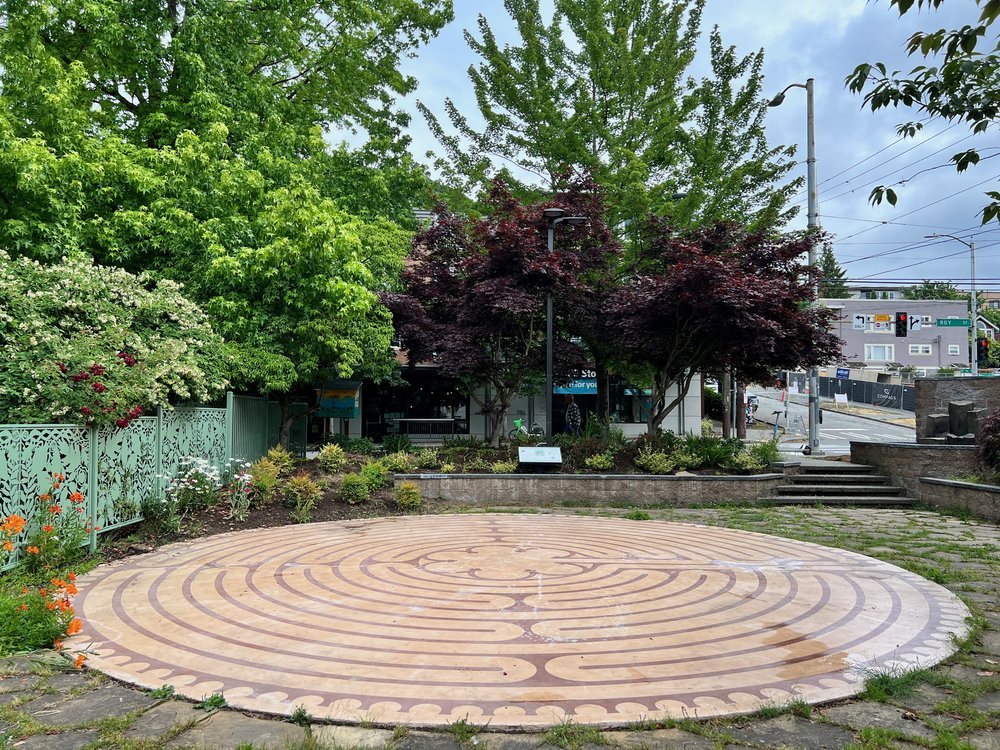Remarks for Shared Homily at the 5:00pm Mass given on the Feast of Saint Peter and Saint Paul, Apostles (transferred) by Mark Lloyd Taylor, Ph.D.
2 Timothy 4:1-8; John 21:15-19
This might be a terrible way to launch a sermon, but I have to confess I don’t remember the specifics of a single sermon I heard preached as a child – and growing up in the Church of the Nazarene, I heard sermons every week, Sunday morning and evening, Wednesday night prayer meeting too. But I do remember the hymns we sang. I could probably retrieve a hundred or so, at least their first lines or refrains.
Well, a couple of weeks ago, I attended the liturgy at Seattle University celebrating and lamenting the closing of the graduate School of Theology and Ministry where I used to teach and the queer, Black artist who provided the music, Stephanie Anne Johnson, sang a hymn I hadn’t heard or thought about in fifty years. It’s entitled “Jewels,” which is also the name of Johnson’s newest album. I immediately recalled the first verse and refrain from my childhood:
When He cometh, when He cometh / To make up His jewels,
All His jewels, precious jewels, / His loved and His own. //
Like the stars of the morning, / His bright crown adorning,
They shall shine in their beauty, / Bright gems for His crown.
Stephanie Anne Johnson, with their acoustic guitar, did a blues-y, breath-y, Black church and country-fied version of the hymn. I’ll play it for you on my phone after mass, if you’d like.
When I got home from the liturgy, I had to look up the hymn in one of my old Nazarene hymnals. [Holding up “Worship in Song” hymnal and then paging through it.] This is not the 1950s hymnal I grew up with, but the one that replaced it in 1972. Still, there it is, “Jewels,” #494 in a little five-page section of hymns for and about children. Then I turned the page to #495, a hymn that begins: “Our church is such a friendly place; It’s where I love to be.” Words by Elizabeth B. Jones – my maternal grandmother. And when I flipped back to the inside cover, there she had written her name: Elizabeth B. Jones. This was my grandmother’s copy of the hymnal. I have no idea when or why it came to me, but this family history coupled with Stephanie Anne Johnson’s redition, forced me to sit a while with the hymn “Jewels.”
It’s an old hymn, with words written by William O. Cushing back in 1854. So, I was not surprised to find lots of capital H “His-es” throughout, which always puts me off a bit: His jewels / His loved and His own / His crown. Although in this case, at least, they all refer to Jesus rather than God “the Father.”
In the first verse: When He cometh, when He cometh / To make up His jewels: “make up” his jewels? Why that verb?
The second verse is a bit more troubling. He will gather, He will gather / The gems for his kingdom: / All the pure ones, all the bright ones, / His loved and His own. Which might suggest there are others, not so pure and bright, but dirty and dull, who Jesus won’t gather. I hope that’s not what Cushing meant.
The third verse makes explicit the connection between children and jewels:
Little children, little children / Who love their Redeemer / Are the jewels, precious jewels, / His loved and His own.
But what most intrigues and entices me about “Jewels” is how this hymn reverses a typical way of imagining us and our lives in relation to Jesus. Think of another old hymn: “Crown Him with many crowns, the Lamb upon His throne.” Little old us paying due allegiance to a high and mighty Lord Jesus, and showing proper deference. Or, how about this one: “So I’ll cherish the old rugged cross, / ‘Til my trophies at last I lay down. / I will cling to the old rugged cross, / And exchange it someday for a crown.” Jesus crowning us with what belongs rightfully and truly to “Him.” Of course there’s truth in both those notions. But listen again to what “Jewels” proposes:
When he cometh, when he cometh / To make up His jewels,
All His jewels, precious jewels, / His loved and His own. //
Like the stars of the morning, / His bright crown adorning,
They shall shine in their beauty, / Bright gems for His crown.
We are the jewels in Jesus’ crown. We adorn him, not just he us. We adorn Jesus by shining with our innate beauty. Like the stars of the morning. How do they adorn Jesus? They just be themselves and act themselves and shine with their own beauty. Us too, in all our unique differences one from one another, and yet also knit together in unity by God’s Spirit. That should be a source of deep pride for us, especially at the end of this Pride Month.
And maybe even Saint Peter and Saint Paul who we commemorate today. What if we imagined them not as bearded men, but as little children, as jewels, as gems for Jesus’ crown. Peter with the belt someone else fastened around him, gracefully letting go, closing the distance from those people he’d rather have avoided. Paul holding on tenaciously, finishing the race, keeping the faith: a libation, a cup of wine, a chalice poured out for God and other people. Pure and bright, both in their own ways.
Stephanie Anne Johnson seems to agree, given the few slight changes they make to the 19th century text of “Jewels. “So let’s be children, little children,” Johnson sings; and “We’re those pure ones, we’re those bright ones, / his loved and his own.”
+++
So, I wonder if and how my trip down memory lane with the hymn “Jewels” engages your life and your experience?
And I wonder how with pride, capital P “Pride,” we might each shine in our own unique beauty – like the stars of the morning – and adorn the crown Jesus wears?
I invite your reflections.
Resources:
stephanieannejohnsonmusic.com
“Worship in Song: Hymnal” (Lillenas Publishing Co. 1972).










